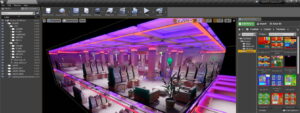Globally popular videogames are created through a labor-intensive and collaborative process that brings virtual worlds to life.
A group of gifted individuals collaborate to produce immersive experiences in every successful game. The roles of game designers, programmers, and artists will be examined in this article in order to highlight their contributions and illuminate their creative processes.
Join us as we reveal the techniques used in game production, whether you’re an aspiring developer or just curious about how the business operates.
Check out the GG Bet promo code here for some thrilling gaming options before we get started.
Designers: Crafting Engaging Experiences
The architects of the gaming industry are the designers, who are in charge of giving gamers engaging and pleasurable experiences. They envision the rules of the game, create the stages, and create gripping stories.
Understanding the intended audience, identifying essential gameplay components, and creating a unified vision for the game are all responsibilities of the designer. To make creative concepts a reality, they collaborate closely with programmers and artists, making sure that gameplay mechanics fit the overall design.
Additionally, essential to playtesting and iteration, designers make adjustments to the game that enhance user experience. The core underpinnings of a game are shaped by designers through their inventiveness and attention to detail.
Programmers: Breathing Life into the Code
The core of game production is programming, which turns design ideas into interactive experiences. They create a program that implements gameplay mechanics, AI, physics systems, and other features.
Designers and artists collaborate closely with programmers to understand their concept and transfer it into usable code. The foundational systems of a game are built using engines like Unity or Unreal Engine and programming languages like C++ or C#.
Their coding prowess and problem-solving skills enable them to enhance performance, eliminate errors, and guarantee a fluid gaming experience. The unsung heroes who give the virtual worlds we play in life are programmers.
Artists: Painting the Digital Canvas
The visually compelling graphics that completely capture players in the game’s universe are the work of artists, who are the visual storytellers of the game development industry. They use their artistic flair and technical know-how to bring things, settings, and characters to life.
Concept art, character design, 3D modelling, animation, and special effects are just a few of the specializations available to artists. They collaborate closely with programmers and designers to translate their concepts into gorgeous images that improve gameplay.
Artists make and work with objects, textures, and animations. They use programs like Photoshop, Maya, or Blender. Their artistic talent and careful consideration add to the aesthetic appeal of the product, improving the player experience as a whole.
Bonus Role – Sound Designers: Setting the Audio Stage
Sound designers are essential because they produce immersive audio experiences that improve gameplay and elicit strong feelings in players. They are in charge of recording, producing, and incorporating voiceovers, music, and sound effects into the game.
In order to match the audio components with the overall vision, sound designers collaborate closely with designers and artists to understand the tone and ambiance of the game.
Sound designers create distinctive sounds for various in-game actions, environments, and character interactions using a combination of recorded sounds, synthesizers, and audio editing tools. Additionally, they work with composers to provide original music or choose licensed tunes that fit the concept of the product.
The game environment is brought to life by their skill in audio engineering and imaginative sound design, immersing players in a rich auditory experience. Sound designers make sure that every audio component, from the unnoticeable rustle of leaves to the thundering roar of explosions, improves gameplay and adds to the sense of immersion.
Final Thoughts
To create interactive works of art, designers, programmers, artists, and sound designers collaborate in the game creation process. The programmers give the code life, the artists paint the digital canvas, and the designers create a compelling user experience, while the sound guys add the final note.
Each function is crucial because they each bring their particular talents and viewpoints to the table. We can better appreciate the depth and originality of our favorite games by comprehending the contributions of these important players.
It’s important to highlight that it doesn’t take just a few programmers and a cool concept to create a gaming product. In recent years, many new types of careers appeared in the field of Game Development. For instance, these are a few types of design specialists that may be needed for the process of creating something new and fresh:
- Systems Designer
- Level Designer
- Game Illustrator
- Technical Artists
- Splash Artists
Make sure to take a moment to recognize the effort and skill that went into making it possible the next time you sit down for a gaming session.




0 Comments